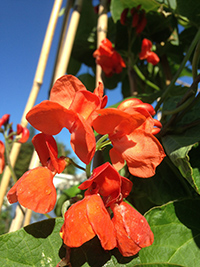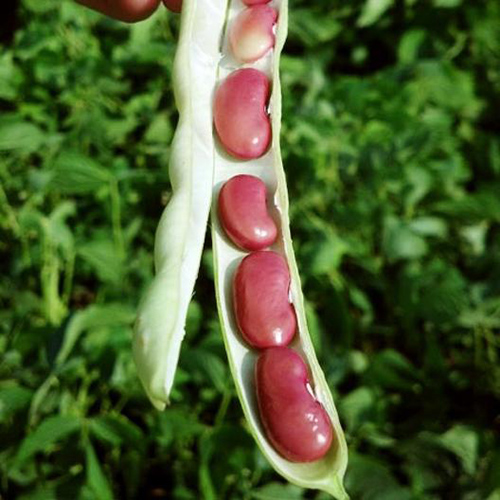Contents
The SEEDS of the kidney bean plant have a high nutritious value, though when raw, they are toxic since they contain phaseolin, a toxalbumin that disappears when beans are cooked. Kidney bean seeds, called simply beans, were, along with corn, the base of the Mayan and Aztec meals, which had already cultivated several varieties. Early in the 20th century, it was revealed that kidney bean pods possessed some interesting medicinal properties.

Kidney Bean Plant Scientific Facts
- Other names: Bean.
- French: Haricot.
- Spanish: Judia, frijol, chaucha, habichuela.
- Environment: The kidney bean plant is native to Mexico and Central America; it has spread worldwide.
- Description: The annual plant of the Leguminosae family has a climbing stem that grows up to 3 m high in some varieties, while others have creeping stems. The fruit is yellow or green pods, which contain several kidney-shaped seeds.
- Parts of the plant used medicinally: The pods covering the seeds.
Healing Properties

Kidney bean pods contain several amino acids, especially arginine and vitamins A, B, and C, mineral salts, trace elements, bran, and starch. They also present three basic properties.
- Thanks to arginine and mineral salts, they are diuretics. They do not have the adverse effects of most pharmaceutical diuretic substances, such as potassium loss. This property is helpful for edema produced by coronary or renal insufficiency and pre-menstrual liquid retention. They are also used for gout and kidney stones since they promote the elimination of uric acid.
- Cardiotonic. This property of kidney bean pods is similar to that of the foxglove plant but much milder. They improve the strength of heart contractions and their overall performance.
- Hypoglycemic. A decoction of kidney bean pods is used to decrease the blood sugar level.
How to use Kidney Bean

- As vegetables. Cooked green pods can be eaten after being dressed with oil and lemon juice. They also have hypoglycemic properties, though less intense than when taken in a decoction.
- Decoction with 100 grams of dry bean pods per liter of water, boiling until the liquid reduces to half. The resulting liquid should be drunk during the day.
Kidney Bean Plant to Treat Diabetes
Arginine is an amino acid present in high amounts in bean pods. It has similar properties to glycoquine (plant insulin) and decreases blood sugar levels.
As a complementary treatment of diabetes, a decoction of bean pods allows a reduction of insulin dosage or that of oral antidiabetic substances. A doctor must monitor this reduction.
DISCLAIMER: All content on this website is presented solely for educational and informational objectives. Do not rely on the information provided as a replacement for advice, diagnosis, or treatment from a qualified medical expert. If you are pregnant, nursing, or have any preexisting medical concerns, talk to your doctor before using any herbal or natural medicines.
REFERENCES
- George D. Pamplona-Roger, M.D. “Encyclopedia of Medicinal Plants.” George D. Pamplona-Roger, M.D. Encyclopedia of Medicinal Plants. Ed. Francesc X. Gelabert. vols. 2 San Fernando de Henares: Editorial Safeliz, 2000. 584. Print. [kidney bean plant]
- Healthline: https://www.healthline.com/nutrition/foods/kidney-beans
- WebMD: https://www.webmd.com/diet/health-benefits-kidney-beans
- EatingWell: https://www.eatingwell.com/article/8013408/are-kidney-beans-healthy/
- Practo: https://www.practo.com/
